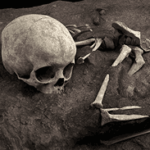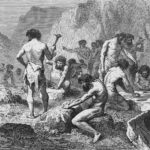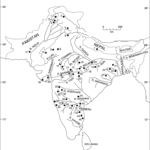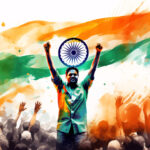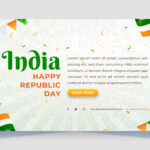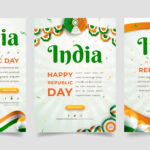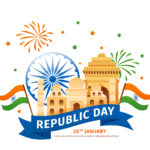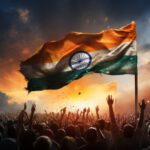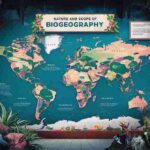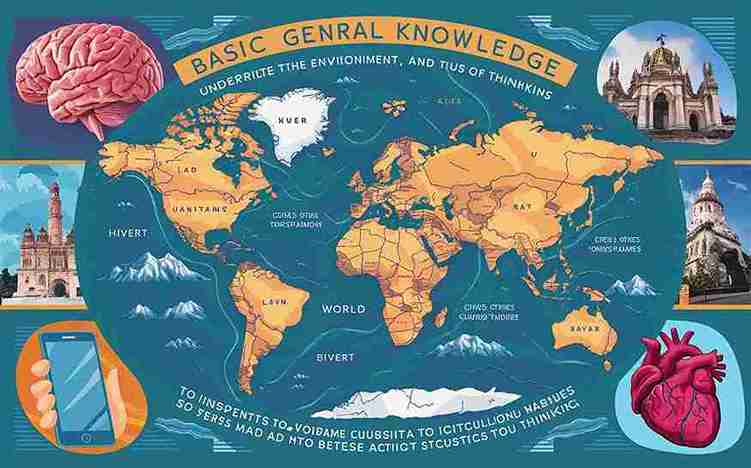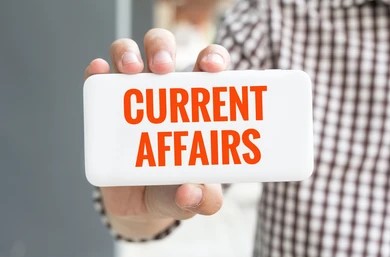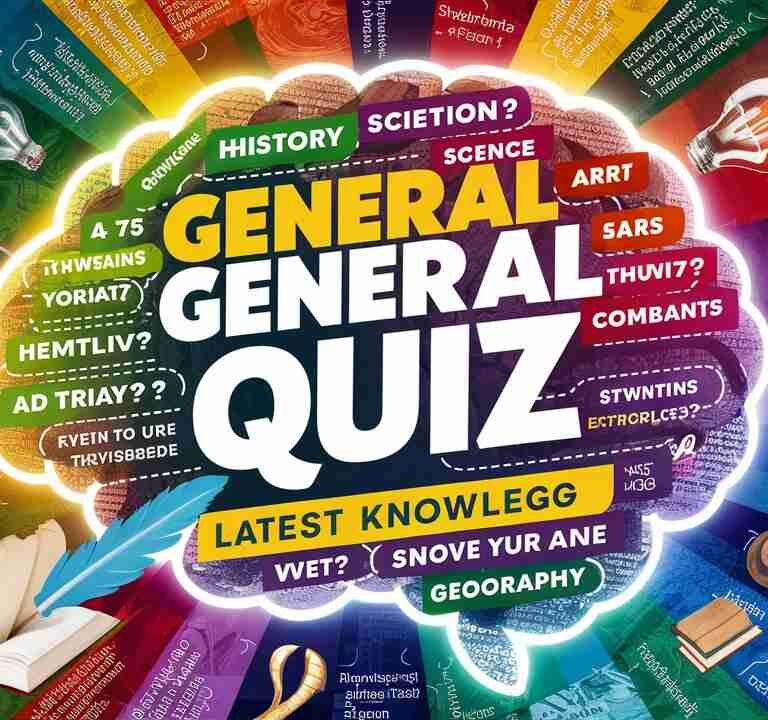50 General Knowledge of India: A Comprehensive Overview
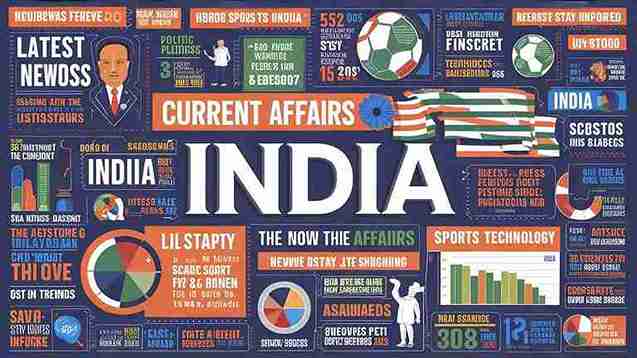
50 General Knowledge of India: A Comprehensive Overview
India, a country with a rich history and diverse culture, is a land of fascinating contrasts and remarkable achievements. From its vibrant traditions to its technological advancements, India has left an indelible mark on the global stage. This comprehensive general knowledge quiz on India covers various aspects, including history, geography, politics, science, culture, and more, designed to test your understanding of this incredible nation.
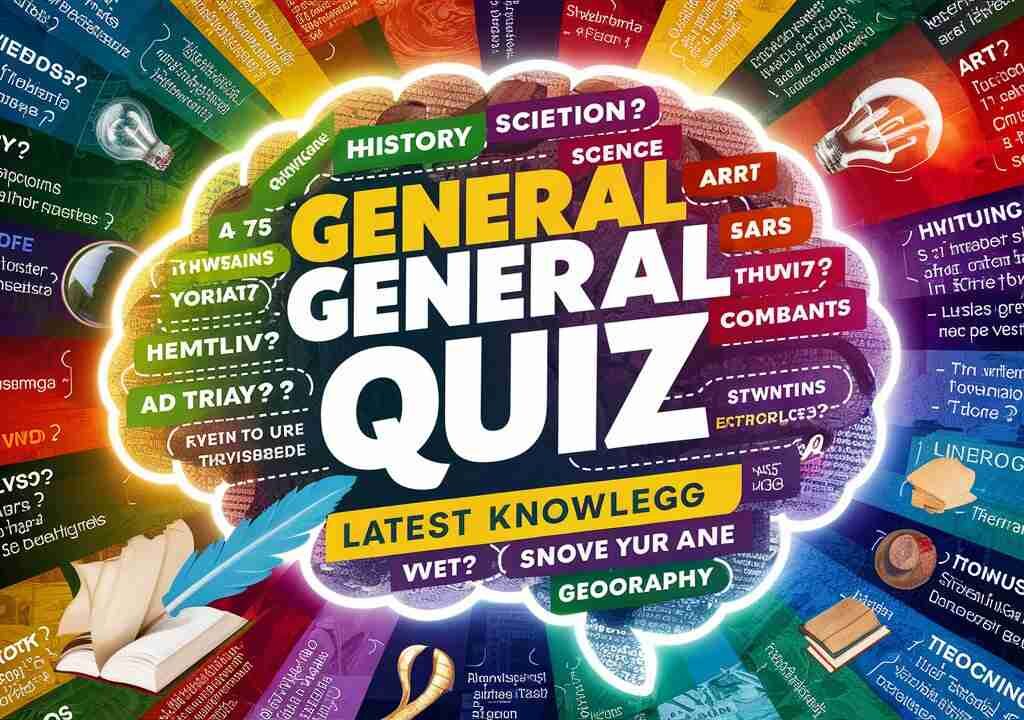
Historical Significance
India’s history is an intricate tapestry of ancient civilizations, empires, and freedom struggles. Figures like Mahatma Gandhi, Jawaharlal Nehru, and Sardar Vallabhbhai Patel are renowned for their pivotal roles in India’s fight for independence. Additionally, the Mughal Empire, the British Raj, and the adoption of the Constitution in 1950 all shaped India into the democratic republic it is today.
Geography and Natural Wonders
India’s geography is as diverse as its people. The country is home to a vast range of physical features, from the towering Himalayas in the north to the expansive Thar Desert in the west. It is crisscrossed by major rivers like the Ganga, Brahmaputra, and Godavari, which sustain millions of lives. The quiz also highlights India’s rich biodiversity, including the Bengal Tiger, the national animal, and the magnificent Peacock, the national bird.
Cultural Heritage
India’s cultural landscape is unique, enriched by classical dance forms such as Bharatanatyam, Kathak, and Odissi, as well as various festivals, languages, and traditions. The quiz includes questions on key cultural symbols, such as the Lotus (national flower) and the Banyan Tree (national tree), which have deep spiritual and historical significance. India’s art and literature, notably represented by Nobel laureate Rabindranath Tagore, further contribute to its cultural wealth.
Scientific Achievements and Global Influence
India has made remarkable strides in science and technology, launching satellites like Aryabhata and achieving milestones in space exploration with missions such as Chandrayaan and Mangalyaan. The country has also developed nuclear power and maintains one of the largest armies in the world. The quiz touches upon these achievements while acknowledging India’s contributions to global peace and innovation.
50 General Knowledge of India: A Comprehensive Overview
Politics and Governance
India’s political framework, based on its Constitution, is the largest democracy in the world. Key political leaders, such as Indira Gandhi, India’s first woman Prime Minister, and influential presidents like Dr. A. P. J. Abdul Kalam, have shaped the nation’s governance. The country’s electoral process and structure of government serve as a model for many other nations.
Sports and Global Recognition
India has a rich history in sports, from ancient traditional games to modern achievements in cricket, hockey, and weightlifting. The quiz celebrates athletes like Karnam Malleswari, the first Indian woman to win an Olympic medal, and India’s numerous accolades in field hockey, which is considered the national sport.
1. Who was the first Prime Minister of independent India?
- a) Mahatma Gandhi
- b) Jawaharlal Nehru
- c) Sardar Vallabhbhai Patel
- d) Subhas Chandra Bose
Answer: b) Jawaharlal Nehru
Explanation: Jawaharlal Nehru served as the first Prime Minister of independent India from 1947 until his death in 1964. He played a central role in India’s freedom struggle and laid the foundation for India’s political and economic institutions.
2. What is the national animal of India?
- a) Elephant
- b) Peacock
- c) Tiger
- d) Lion
Answer: c) Tiger
Explanation: The Bengal Tiger was declared the national animal of India in 1972 due to its grace, strength, and presence in Indian mythology and culture.
3. Which river is considered the holiest in Hinduism?
- a) Yamuna
- b) Ganga
- c) Brahmaputra
- d) Narmada
Answer: b) Ganga
Explanation: The Ganges River is revered in Hinduism as a purifier and is considered sacred. Millions of Hindus believe that bathing in its waters can cleanse one’s sins.
4. Who is known as the “Iron Man of India”?
- a) Subhas Chandra Bose
- b) Jawaharlal Nehru
- c) Mahatma Gandhi
- d) Sardar Vallabhbhai Patel
Answer: d) Sardar Vallabhbhai Patel
Explanation: Sardar Vallabhbhai Patel earned the title “Iron Man of India” for his role in uniting 562 princely states to form a united India after independence.
50 General Knowledge of India: A Comprehensive Overview
5. What is the capital city of India?
- a) Mumbai
- b) Kolkata
- c) New Delhi
- d) Chennai
Answer: c) New Delhi
Explanation: New Delhi, the capital of India, serves as the seat of all three branches of the Government of India: executive, legislative, and judiciary.
50 General Knowledge of India: A Comprehensive Overview
6. Who is called the “Father of the Nation” in India?
- a) B. R. Ambedkar
- b) Mahatma Gandhi
- c) Subhas Chandra Bose
- d) Bhagat Singh
Answer: b) Mahatma Gandhi
Explanation: Mahatma Gandhi is widely regarded as the “Father of the Nation” for his pivotal role in India’s independence movement through non-violent civil disobedience.
7. What is the official currency of India?
- a) Dollar
- b) Yen
- c) Rupee
- d) Pound
Answer: c) Rupee
Explanation: The Indian Rupee (INR) is the official currency of India, managed by the Reserve Bank of India.
8. Who wrote the national anthem of India?
- a) Rabindranath Tagore
- b) Bankim Chandra Chatterjee
- c) Sarojini Naidu
- d) Swami Vivekananda
Answer: a) Rabindranath Tagore
Explanation: Rabindranath Tagore, a Nobel laureate, wrote the national anthem “Jana Gana Mana.”
9. What is the national flower of India?
- a) Rose
- b) Lotus
- c) Jasmine
- d) Marigold
Answer: b) Lotus
Explanation: The Lotus is the national flower of India, symbolizing purity and spirituality in Indian culture.
10. Which is the largest state in India by area?
- a) Maharashtra
- b) Uttar Pradesh
- c) Rajasthan
- d) Madhya Pradesh
Answer: c) Rajasthan
Explanation: Rajasthan is the largest state in India by area, covering approximately 342,239 square kilometers.
11. Which Indian city is known as the “Silicon Valley of India”?
- a) Mumbai
- b) Bengaluru
- c) Hyderabad
- d) Pune
Answer: b) Bengaluru
Explanation: Bengaluru is called the “Silicon Valley of India” due to its role as the nation’s leading information technology (IT) exporter.
12. In which year did India gain independence?
- a) 1945
- b) 1947
- c) 1950
- d) 1952
Answer: b) 1947
Explanation: India gained independence from British rule on August 15, 1947, following a long struggle for freedom.
13. What is the national sport of India?
- a) Cricket
- b) Football
- c) Hockey
- d) Kabaddi
Answer: c) Hockey
Explanation: Field Hockey is considered the national sport of India, with the Indian men’s team winning several Olympic gold medals.
14. Who is the author of the book Discovery of India?
- a) Rabindranath Tagore
- b) B. R. Ambedkar
- c) Jawaharlal Nehru
- d) Sarojini Naidu
Answer: c) Jawaharlal Nehru
Explanation: Discovery of India was written by Jawaharlal Nehru during his imprisonment in 1942-1946, reflecting on India’s rich history and culture.
15. Who was the first woman Prime Minister of India?
- a) Indira Gandhi
- b) Sarojini Naidu
- c) Pratibha Patil
- d) Sushma Swaraj
Answer: a) Indira Gandhi
Explanation: Indira Gandhi, the daughter of Jawaharlal Nehru, became the first female Prime Minister of India, serving from 1966-1977 and again from 1980-1984.
16. What is the national bird of India?
- a) Sparrow
- b) Peacock
- c) Parrot
- d) Eagle
Answer: b) Peacock
Explanation: The Indian Peafowl (Peacock) was declared the national bird of India in 1963 due to its rich cultural significance.
17. What is the largest river island in India?
- a) Majuli
- b) Lakshadweep
- c) Havelock
- d) Diu
Answer: a) Majuli
Explanation: Majuli, located on the Brahmaputra River in Assam, is recognized as the largest river island in the world.
18. Which was the first satellite launched by India?
- a) INSAT-1A
- b) Aryabhata
- c) PSLV-C37
- d) Mangalyaan
Answer: b) Aryabhata
Explanation: Aryabhata was the first Indian satellite, launched on April 19, 1975, marking a significant achievement in India’s space program.
19. Which state is known as the “Land of Rising Sun” in India?
- a) Sikkim
- b) West Bengal
- c) Arunachal Pradesh
- d) Nagaland
Answer: c) Arunachal Pradesh
Explanation: Arunachal Pradesh, located in the northeastern region, is the first Indian state to receive the sunrise, earning it the nickname “Land of Rising Sun.”
20. Who was the first Indian to win a Nobel Prize?
- a) C. V. Raman
- b) Hargobind Khorana
- c) Rabindranath Tagore
- d) Amartya Sen
Answer: c) Rabindranath Tagore
Explanation: Rabindranath Tagore won the Nobel Prize in Literature in 1913 for his collection of poems Gitanjali.
21. In which year was the Indian Constitution adopted?
- a) 1947
- b) 1948
- c) 1950
- d) 1951
Answer: c) 1950
Explanation: The Constitution of India came into effect on January 26, 1950, marking the day when India became a republic.
22. Which city is referred to as the “City of Joy”?
- a) Chennai
- b) Mumbai
- c) Kolkata
- d) Hyderabad
Answer: c) Kolkata
Explanation: Kolkata, the capital of West Bengal, is known as the “City of Joy” due to its vibrant culture and heritage.
23. Which Indian state is the largest producer of tea?
- a) Kerala
- b) Assam
- c) West Bengal
- d) Tamil Nadu
Answer: b) Assam
Explanation: Assam is the largest tea-producing state in India, known for its high-quality tea that is exported globally.
24. What is the main language spoken in the state of Kerala?
- a) Tamil
- b) Kannada
- c) Telugu
- d) Malayalam
Answer: d) Malayalam
Explanation: Malayalam is the official language of Kerala, a state located in the southwestern part of India.
25. Which historical monument is referred to as the “Crown of Palaces”?
- a) Red Fort
- b) Hawa Mahal
- c) Charminar
- d) Taj Mahal
Answer: d) Taj Mahal
Explanation: The Taj Mahal, a symbol of love and one of the Seven Wonders of the World, is often called the “Crown of Palaces.”
26. Which dance form is associated with the state of Odisha?
- a) Kathak
- b) Kuchipudi
- c) Odissi
- d) Bharatanatyam
Answer: c) Odissi
Explanation: Odissi is a classical dance form that originated in Odisha. It is known for its intricate movements and graceful expressions.
27. Who was the first Indian woman to go to space?
- a) Sunita Williams
- b) Kalpana Chawla
- c) Indira Gandhi
- d) Ritu Karidhal
Answer: b) Kalpana Chawla
Explanation: Kalpana Chawla was the first Indian-origin woman astronaut who flew in space aboard the Space Shuttle Columbia in 1997.
28. What is the national tree of India?
- a) Neem
- b) Banyan
- c) Peepal
- d) Mango
Answer: b) Banyan
Explanation: The Banyan tree, known for its longevity and large canopy, is the national tree of India.
29. Which Indian state is known as the “Spice Garden of India”?
- a) Kerala
- b) Karnataka
- c) Andhra Pradesh
- d) Tamil Nadu
Answer: a) Kerala
Explanation: Kerala is referred to as the “Spice Garden of India” because of its extensive cultivation of spices like black pepper, cardamom, and cinnamon.
30. Which Indian state has the longest coastline?
- a) Tamil Nadu
- b) Gujarat
- c) Maharashtra
- d) Andhra Pradesh
Answer: b) Gujarat
Explanation: Gujarat has the longest coastline among Indian states, stretching over 1,600 kilometers along the Arabian Sea.
31. Which Mughal emperor built the Red Fort in Delhi?
- a) Akbar
- b) Shah Jahan
- c) Babur
- d) Aurangzeb
Answer: b) Shah Jahan
Explanation: The Red Fort in Delhi was built by Emperor Shah Jahan in 1648. It served as the main residence of the Mughal emperors.
32. What is the name of India’s first indigenous nuclear submarine?
- a) INS Vikrant
- b) INS Chakra
- c) INS Arihant
- d) INS Kalvari
Answer: c) INS Arihant
Explanation: INS Arihant is India’s first indigenous nuclear-powered ballistic missile submarine, launched in 2009.
33. Which Indian state is the largest producer of wheat?
- a) Maharashtra
- b) Punjab
- c) Uttar Pradesh
- d) Haryana
Answer: c) Uttar Pradesh
Explanation: Uttar Pradesh is the largest producer of wheat in India, contributing significantly to the country’s total wheat output.
34. Which was the first Indian state to be formed on a linguistic basis?
- a) Maharashtra
- b) Gujarat
- c) Andhra Pradesh
- d) Karnataka
Answer: c) Andhra Pradesh
Explanation: Andhra Pradesh was the first state in India to be formed on a linguistic basis in 1953, with Telugu as the official language.
35. What is the highest civilian award in India?
- a) Padma Shri
- b) Bharat Ratna
- c) Padma Bhushan
- d) Param Vir Chakra
Answer: b) Bharat Ratna
Explanation: The Bharat Ratna is India’s highest civilian award, given for exceptional service in arts, literature, science, or public service.
36. Which is the largest desert in India?
- a) Great Rann of Kutch
- b) Thar Desert
- c) Spiti Valley
- d) Ladakh
Answer: b) Thar Desert
Explanation: The Thar Desert, also known as the Great Indian Desert, is the largest desert in India, located primarily in the state of Rajasthan.
37. Who was the first Indian president to die in office?
- a) Zakir Husain
- b) Rajendra Prasad
- c) S. Radhakrishnan
- d) Giani Zail Singh
Answer: a) Zakir Husain
Explanation: Dr. Zakir Husain, the third President of India, passed away while in office in 1969.
38. What is the ancient Indian system of medicine called?
- a) Unani
- b) Siddha
- c) Ayurveda
- d) Allopathy
Answer: c) Ayurveda
Explanation: Ayurveda is an ancient system of medicine that originated in India over 3,000 years ago and focuses on a balance between the body, mind, and spirit.
39. Which Indian state has the highest literacy rate?
- a) Tamil Nadu
- b) Maharashtra
- c) Kerala
- d) Gujarat
Answer: c) Kerala
Explanation: Kerala has the highest literacy rate in India, with a literacy rate of around 96%.
40. Which Indian personality gave the slogan “Jai Jawan Jai Kisan”?
- a) Jawaharlal Nehru
- b) Indira Gandhi
- c) Lal Bahadur Shastri
- d) Atal Bihari Vajpayee
Answer: c) Lal Bahadur Shastri
Explanation: The slogan “Jai Jawan Jai Kisan” (Hail the soldier, Hail the farmer) was coined by Prime Minister Lal Bahadur Shastri in 1965 during the Indo-Pak war.
41. Which is the only Indian state with a floating national park?
- a) Kerala
- b) Assam
- c) Manipur
- d) Jammu & Kashmir
Answer: c) Manipur
Explanation: The Keibul Lamjao National Park in Manipur is the only floating national park in the world, located on the Loktak Lake.
42. In which year did India conduct its first nuclear test?
- a) 1965
- b) 1974
- c) 1984
- d) 1998
Answer: b) 1974
Explanation: India conducted its first successful nuclear test, code-named “Smiling Buddha,” in Pokhran, Rajasthan, on May 18, 1974.
43. Which Indian freedom fighter was known as the “Nightingale of India”?
- a) Sarojini Naidu
- b) Indira Gandhi
- c) Kamala Nehru
- d) Vijaya Lakshmi Pandit
Answer: a) Sarojini Naidu
Explanation: Sarojini Naidu was called the “Nightingale of India” for her poetic achievements and her role in India’s freedom struggle.
44. Which Indian state is the largest producer of silk?
- a) Tamil Nadu
- b) Karnataka
- c) West Bengal
- d) Andhra Pradesh
Answer: b) Karnataka
Explanation: Karnataka is the largest producer of silk in India, contributing around 70% of the country’s total silk production.
45. Who was the first Governor-General of independent India?
- a) Lord Mountbatten
- b) Rajendra Prasad
- c) C. Rajagopalachari
- d) B. R. Ambedkar
Answer: a) Lord Mountbatten
Explanation: Lord Louis Mountbatten was the last Viceroy and the first Governor-General of independent India until 1948, when C. Rajagopalachari succeeded him.
46. What is the main source of energy in India?
- a) Hydroelectricity
- b) Nuclear energy
- c) Coal
- d) Solar energy
Answer: c) Coal
Explanation: Coal remains the primary source of energy in India, accounting for around 70% of the country’s electricity generation.
47. Which city is known as the “Manchester of India”?
- a) Kolkata
- b) Ahmedabad
- c) Mumbai
- d) Bengaluru
Answer: b) Ahmedabad
Explanation: Ahmedabad is known as the “Manchester of India” because of its thriving textile industry, which is similar to Manchester in the UK.
48. Who was the first Indian woman to win an Olympic medal?
- a) P. T. Usha
- b) Mary Kom
- c) Saina Nehwal
- d) Karnam Malleswari
Answer: d) Karnam Malleswari
Explanation: Karnam Malleswari won a bronze medal in weightlifting at the 2000 Sydney Olympics, becoming the first Indian woman to achieve this feat.
49. What is the longest river in India?
- a) Ganga
- b) Brahmaputra
- c) Godavari
- d) Narmada
Answer: a) Ganga
Explanation: The Ganga River is the longest river in India, stretching approximately 2,525 kilometers from the Himalayas to the Bay of Bengal.
50. What is the oldest mountain range in India?
- a) Himalayas
- b) Aravalli Range
- c) Western Ghats
- d) Eastern Ghats
Answer: b) Aravalli Range
Explanation: The Aravalli Range is the oldest mountain range in India, dating back over 300 million years.
How to give a speech on Independence Day as a teacher?
About the Author
Sisir Mondal
Administrator
My name is SISIR MONDAL, I complete my graduate from University of Kalyani , West Bengal, India . I am like to build WordPress website and also developing this type of website . If you want your website , you can contact me trough email. thanks to visit this site.
